Rough sleeping hits hard on local high streets
- Published
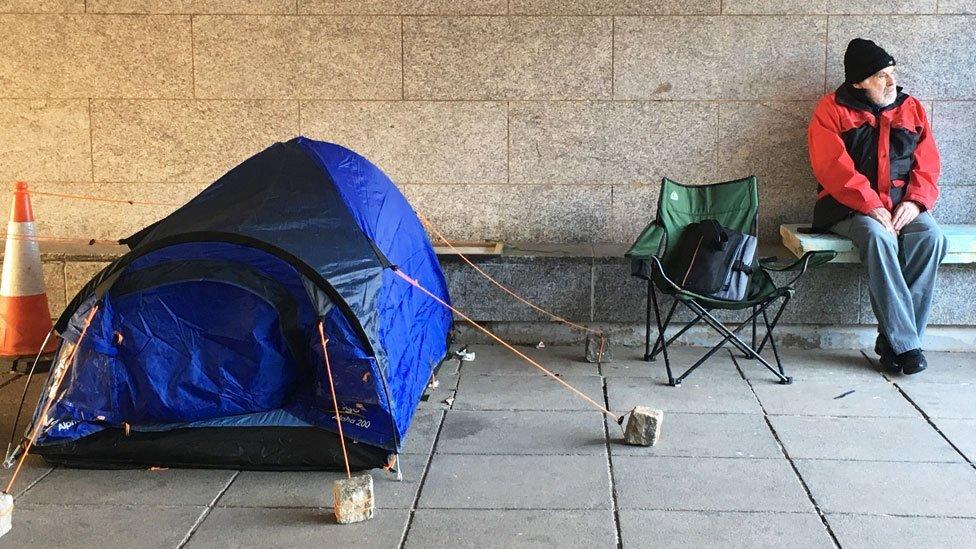
"What can I do?" Tony, aged 72, is living in a tent in the middle of Milton Keynes
Rough sleeping in England has reached record levels - with figures published on Thursday showing an annual rise of 15%, representing a 169% increase since 2010.
It's no longer confined to London and the big cities - three quarters are outside the capital - and rough sleepers have been appearing in tents and shop doorways in towns where it seems unexpected and out of place.
Tony, a 72-year-old former railway worker, is living in a small blue tent in a concrete underpass.
It gives him some shelter from the bitingly cold January wind blowing along Midsummer Boulevard, not far from families shopping in Milton Keynes.
It's not the kind of town where you'd expect to see clusters of homeless people, their tents and mattresses a few yards away from Costa coffee and Marks and Spencer.
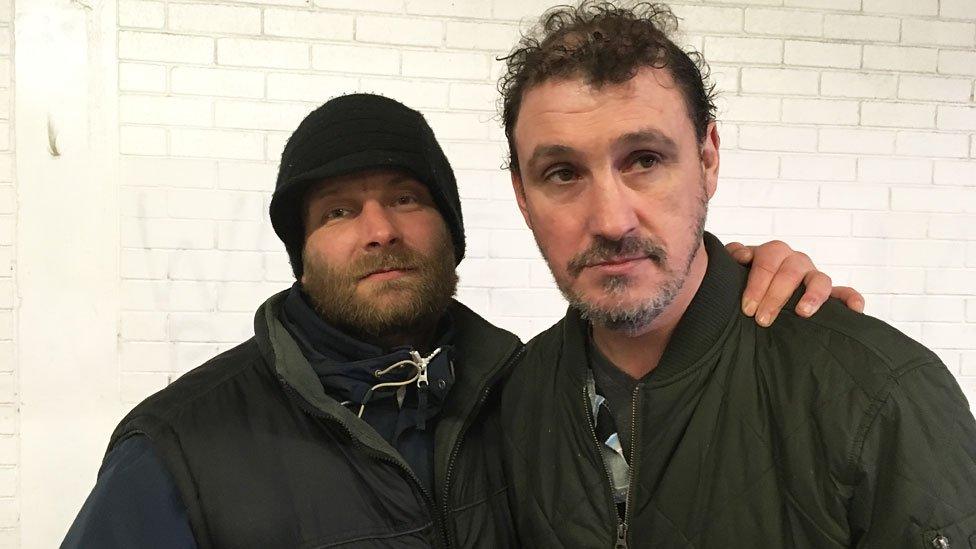
"It could be worse... but not much." Ian and Will are living in a car park in Crewe
It's the classic new town, a model of modern post-War optimism, laid out as neatly as a circuit board.
There aren't any books called Down and Out in Milton Keynes. But homelessness seems to be coming closer to home.
There are lines of tents in the underpasses, and a hut made of wood and bits of plastic is wedged under a road bridge.
Expensive rent
Tony, one of an estimated 130 rough sleepers in the middle of Milton Keynes, has been homeless for almost a year, saying he lost his flat after a problem over rent and benefits, which ended with the bailiffs on his doorstep.
Ian and Will say they live under the threat of violent attacks from local youths
He says that he can afford to eat, but has no chance of being able to afford private rent.
"What can I do?" he says.
He is not self-pitying and doesn't blame anyone else, but sits in his hat and coat beside the one-man tent that now holds all his possessions. He says his family could call him if they wanted to get in touch.
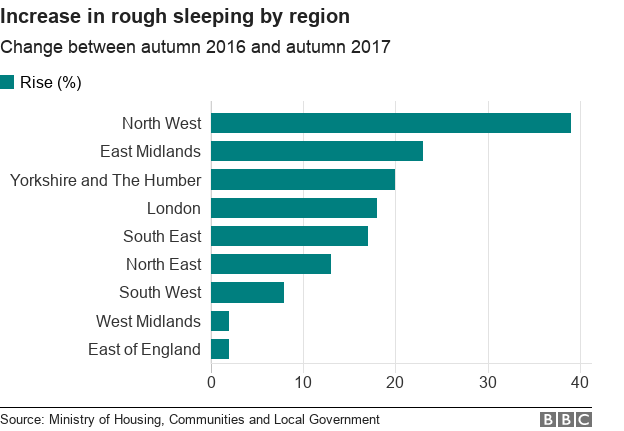
"Every time I wake up, it's a bonus," he says.
As the problem has become more visible, there have been innovative and creative acts of generosity.
Robbie Williams's old bus
Tom Davis, who was once homeless himself, founded a charity to convert a bus into temporary accommodation, external - a "bus shelter".
The coach being turned into bunk beds for 16 homeless people was once a touring bus for Robbie Williams and his road crew.
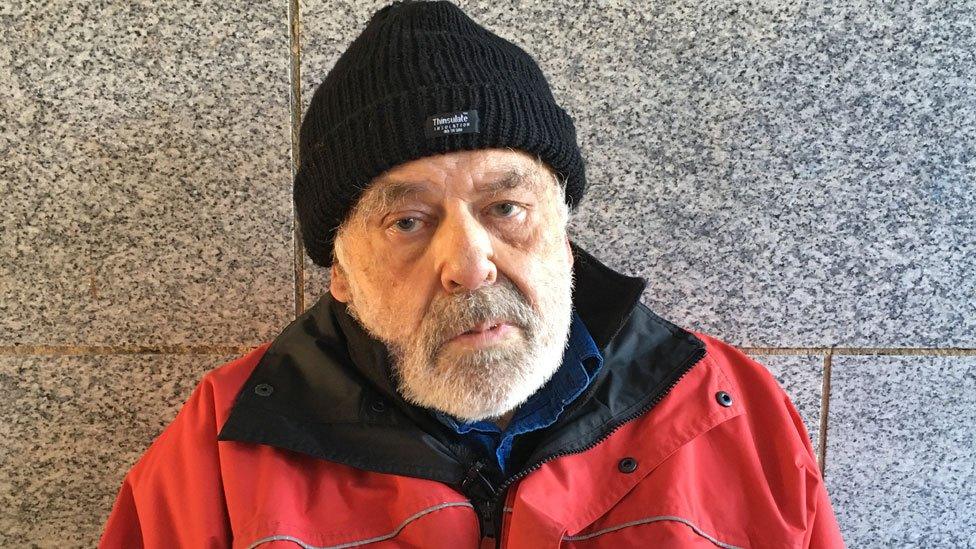
Tony says he has no chance of being able to afford high local rents
As well as providing a safe bed for the night, the bus will provide an address, allowing people to sign up for GPs and health services.
Tom says it will also help with one of the big unacknowledged problems for rough sleepers, the intense loneliness.
Among the new homeless in Milton Keynes are people who are working. Some of these are caught in the unreliable incomes of zero-hour contracts.
But others, such as Isaac, are working full-time.
Homeless while working full-time: "If I said it was overwhelming, it would be an understatement."
This project manager for Deloitte has found himself temporarily part of the town's homeless population, staying in a winter shelter.
He says that being presentable, not being on drugs and not appearing vulnerable, has made it even harder to get help.
'Shocking' to local people

Tents have appeared in the underpasses of Milton Keynes
This rise in rough sleeping has shocked local people.
Pam Williams, who chairs the bus shelter project, says she got involved because she was so upset when she saw homeless people appearing outside the train station.
A local street cleaner goes by, who says he was once part of the less visible homeless population - spending days and nights with his wife in late-night fast food restaurants.

Who are the rough sleepers?
Annual rough sleeping count shows highest ever recorded level of 4,751
The numbers have risen by 15% compared with last year, up 169% since 2010
More than three quarters are outside London
Big increases reported in Brighton, Medway, Southend, Oxford, Tameside, Worthing, Salford and Eastbourne
14% of rough sleepers are women
More than nine in 10 are over the age of 25
One in five is originally from outside the UK
Sorry, your browser cannot display this map
Map built with Carto. Can't see the map? Click here, external.

The reasons for this increase are as varied as the stories of the rough sleepers.
It might relate to benefits changes, unaffordable housing, low incomes, addiction, relationship breakdowns, mental health problems, debt, bereavement.
There are former servicemen and ex-prisoners - and there are people who do not fit into any of these stereotypes.
Under attack
Homelessness, once associated with the big cities, is snaking across the country.
The train line north from London goes through Milton Keynes and then to Crewe, where rough sleeping now lives alongside quiet red-brick terraces.

Will (right) says he has Huntingdon's disease and has recently left hospital. Ian says Crewe is his home town.
A homeless man's tent is floodlit by the windows of a leisure centre, where families are hurrying inside from the cold.
A short distance away is a small indoor car park. In the far corner, behind the rows of family saloons, there's a flag of Saint George hanging over a tangle of mattresses and bedding.
Ian and Will are living there, dressed in layers and ready for more than the elements.
They say that local youngsters regularly attack them when they're sleeping, throwing bricks at them or assaulting them.
Homeless in your home town
Ian says they can't even defend themselves because they think they will get the blame if they try to tackle the teenagers circling nearby.
He might be described as "homeless", but Crewe is Ian's home town. The streets where he now sleeps rough were the same streets he walked to school.
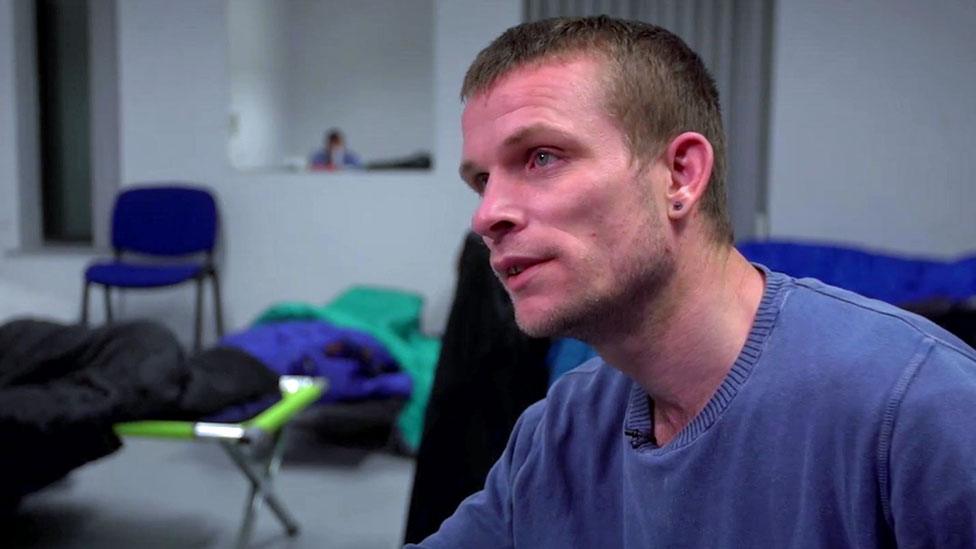
Chris, at the YMCA during the severe weather, is homeless in his home town
"It's embarrassing seeing people you grew up with," he says.
Will, shaking and unsteady, has Huntington's disease and says he has returned to the streets after a long spell in hospital.
"It could be worse," says Ian.
"Not much," says Will.
But since talking to the rough sleepers in Crewe last week, Cheshire East council has found Will accommodation.
Severe weather shelter
It's apparent how much help depends on volunteers and charities.
Will and Ian say they are able to survive only because of help from Bernard Potter, a retired accountant who helped to set up Looking After the Homeless (LATH), external, a group of volunteers who provide food, advice and a drop-in centre.
It's such unsung people, a no-nonsense pensioner in a flat cap, who are keeping people alive.
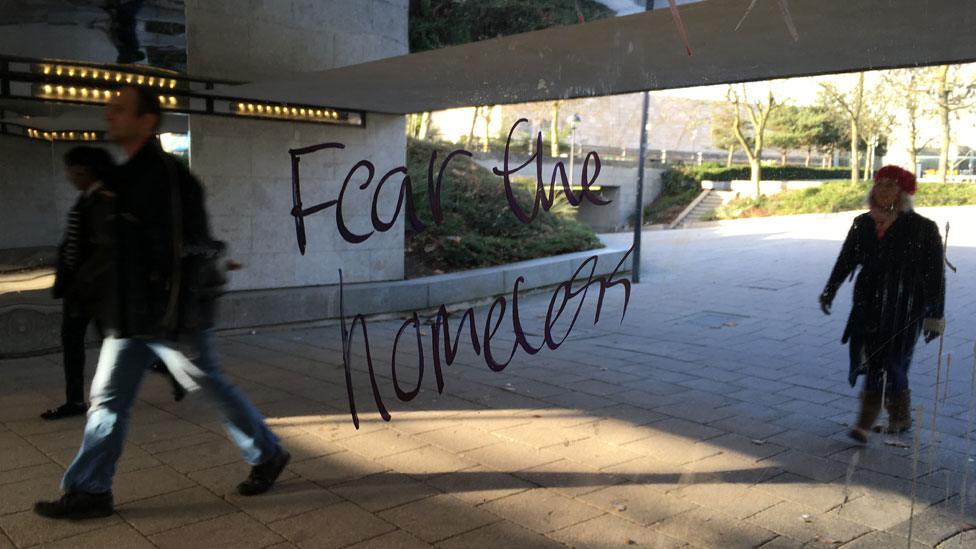
"Fear the homeless": Graffiti on a mirror wall in Milton Keynes
When there's severe weather, the local YMCA in Crewe lets people stay inside. There are already more than 60 regular residents - and on top of this another seven camp beds are set up for the night.
Chris, who has one of the beds, talks openly about his troubles with crack and heroin.
He's also homeless in his own home town. When he was sleeping rough, he saw people he knew from school.
"They've got houses, they've got family. We've got nothing... except a camp bed," he says. "It destroys your head sometimes."
Toes lost to frostbite
Being inside for the night means warmth and safety from the threat of being beaten up by bored teenagers.
"You wake up shivering, the rain battering down on you and you've nowhere else to go," Chris says.
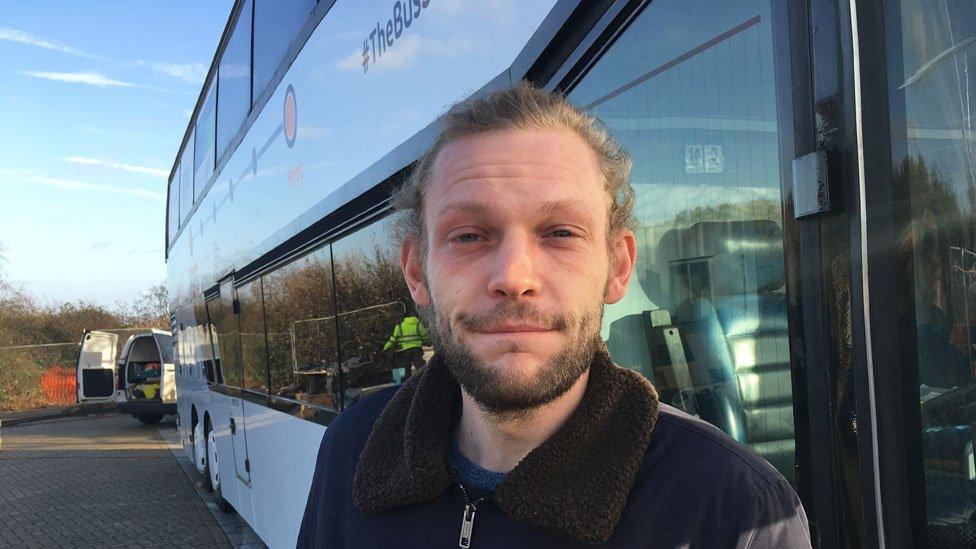
Tom Davis has set up a charity converting a former Robbie Williams tour bus into accommodation for the homeless
Across the room is a middle-aged Polish man. He has a gentle manner, but speaks almost no English. Using Google Translate, he says he was a farm worker but was never paid wages and lost both his work and accommodation after he had been in hospital for an operation.
He has ended up on a camp bed in the YMCA, wearing a Christmas jumper. It's hard to imagine anyone looking more stuck and isolated.
Joel Lewis, a manager at the YMCA, says he's seen the levels of homelessness getting worse, with demand in Crewe up by almost 40% compared with the previous year.
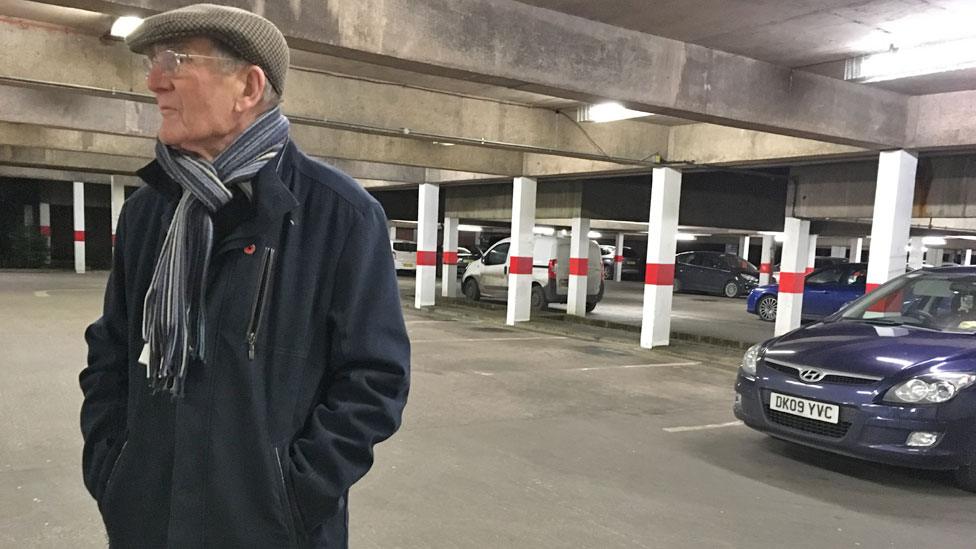
Bernard Potter has helped homeless people to survive, say those he has helped in Crewe
He says he's worried such rising numbers will mean that shelters will become like "warehouses", unable to offer the support so sorely needed.
His colleague Matt Coles says he has seen people arriving who have lost fingers and toes to frostbite.
With numbers rising to record levels across the country, it could be a long winter for those sleeping rough and those trying to help them.
Video and additional reporting Michael Buchanan, Camilla Horrox and Jonathan Sumberg. Map created by William Dahlgreen.